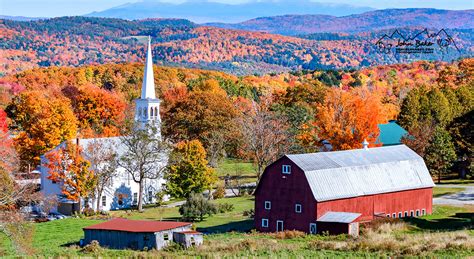Nestled in the picturesque embrace of the New England region, Maine and Vermont stand as twin beacons of natural beauty, cultural heritage, and economic vitality. Each state boasts a unique charm and allure that captivate visitors and residents alike. But as the oft-debated question of “Maine vs Vermont” arises, which shall reign supreme in this epic showdown? Let us delve into their captivating tapestry and compare these two gems to uncover their distinct strengths and distinctions.

Landscapes and Natural Wonders
Maine: The Rockbound Coast and Verdant Forests
Maine’s rugged coastline, adorned with mesmerizing granite cliffs, captivating lighthouses, and serene sandy beaches, beckons nature enthusiasts and adventure seekers alike. The state’s vast interior is a symphony of verdant forests, sparkling lakes, and majestic mountains. Acadia National Park, a crown jewel of the Atlantic coast, offers breathtaking hikes, panoramic vistas, and wildlife encounters.
Vermont: The Green Mountains and Rolling Hills
Vermont’s landscape is a harmonious blend of verdant Green Mountains and rolling hills. The state’s namesake range, stretching from north to south, offers challenging hikes, scenic vistas, and opportunities for winter sports. Vermont’s idyllic countryside, dotted with picturesque farms and charming towns, exudes a pastoral charm that enchants every visitor.
Economy and Industry
Maine: Maritime Heritage and Coastal Livelihoods
Maine’s economy is deeply intertwined with its maritime heritage. Commercial fishing, lobstering, and shipbuilding have long been the lifeblood of coastal communities. The state’s natural resources, including forests, agriculture, and renewable energy, also contribute to its economic vitality.
Vermont: Agriculture, Tourism, and Manufacturing
Vermont’s economy is characterized by a strong agricultural sector, particularly in dairy farming and maple syrup production. Tourism is another major industry, with visitors drawn to the state’s natural beauty, outdoor recreation opportunities, and charming towns. Manufacturing, particularly in precision instruments and electronics, also plays a significant role in the state’s economy.
Culture and Way of Life
Maine: Independent Spirit and Down-to-Earth Charm
Mainers are known for their independent spirit, self-reliance, and strong work ethic. The state’s coastal communities exude a laid-back, maritime charm, while inland towns offer a warm and welcoming atmosphere. Maine’s cultural heritage is a blend of New England tradition and maritime influences, reflected in its cuisine, music, and folklore.
Vermont: Green Values and Artistic Expression
Vermont’s Green Mountain State moniker aptly reflects its residents’ deep connection to the environment. The state is renowned for its progressive values, including a strong commitment to sustainability and renewable energy. Vermont’s thriving arts community showcases its creative spirit, from vibrant music and theater scenes to renowned art galleries and literary festivals.
Recreation and Activities
Maine: Coastal Adventures and Outdoor Paradise
Maine’s rugged coastline offers unparalleled opportunities for kayaking, sailing, fishing, and whale watching. The state’s vast forests and mountains beckon hikers, bikers, skiers, and snowmobilers. Acadia National Park is a year-round destination for outdoor enthusiasts, offering a multitude of recreational pursuits.
Vermont: Mountain Escapades and Winter Charms
Vermont’s Green Mountains provide ample terrain for hiking, biking, and trail running. The state’s picturesque ski resorts attract winter sports enthusiasts, while its charming towns offer cozy accommodations, quaint shops, and delectable dining experiences. Vermont’s covered bridges, historic villages, and scenic byways invite visitors to immerse themselves in its rural beauty.
Tables for Comparison
To facilitate a comprehensive comparison, let us present several tables highlighting key aspects of Maine and Vermont:
Table 1: Geography and Population
| Attribute | Maine | Vermont |
|---|---|---|
| Area (sq mi) | 35,385 | 9,616 |
| Population (2023 est.) | 1,344,212 | 623,989 |
| Coastline (mi) | 3,478 | 89 |
Table 2: Economy and Industry
| Attribute | Maine | Vermont |
|---|---|---|
| GDP (2022 est., billions) | $72.7 | $33.8 |
| Median household income (2022 est.) | $63,877 | $82,849 |
| Unemployment rate (Jan 2023) | 3.5% | 2.9% |
Table 3: Culture and Demographics
| Attribute | Maine | Vermont |
|---|---|---|
| Racial composition (2021 est.) | 93.9% White | 94.1% White |
| Educational attainment (bachelor’s degree or higher, 2021 est.) | 29.8% | 39.1% |
| Political affiliation (2020 presidential election) | 36.5% Democrat | 58.6% Democrat |
Table 4: Recreation and Tourism
| Attribute | Maine | Vermont |
|---|---|---|
| National parks | 1 (Acadia) | None |
| State parks | 50 | 57 |
| Ski resorts | 14 | 18 |
Conclusion
The choice between Maine and Vermont is ultimately a personal one, based on individual preferences and priorities. Both states offer a captivating blend of natural beauty, cultural heritage, and economic opportunities. Maine’s rugged coastline and maritime heritage allure those seeking adventure and a connection to the sea. Vermont’s Green Mountains and charming towns entice those drawn to outdoor recreation and a harmonious balance with nature.
As visitors and residents alike ponder this eternal debate, they may conclude that the true victor lies in the discovery of both states’ unique and captivating qualities. Maine and Vermont, like two sides of the same coin, complement each other in their distinct offerings. Whether one seeks the raw beauty of the coast or the serenity of the mountains, the vibrant culture of cities or the tranquility of rural towns, both states stand ready to embrace and enchant travelers of all ages.
